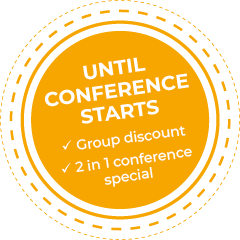Speaker
Infos
09:00 - 17:00
Description
In this workshop, we will have a practical non-toy example with realistic image data (no MNIST). We will train VGG-style and other standard architectures like ResNet using TensorFlow 2 and log and evaluate our experiments using MLFLow. Finally, we will look at saliency maps to understand what parts of the images our trained networks use to classify images. Maybe we are overfitting on random features? We will also look at confusion matrices and analyse what kinds of images are problematic and which ones are easy to identify leading up to an active learning approach: What kind of additional data would we need to improve our training results?
Content & Process
In this workshop we will cover the basics of image recognition looking at several realistic examples. All examples and hands-on exercises will be hosted as notebooks on the
Colab service requiring just a Chrome browser and a Google login. This allows us to concentrate on content and at the same time provides us with state of the art hardware accelerators.
You will get the chance to try out standard models for image recognition and build model of your own from scratch.
Topics in detail
1. Image Recognition quick-start
1. History of Image Recognition
2. Why using ML for that task?
3. Our first complete example using TensorFlow
2. Layers for Image Recognition
1. Dense Layers
2. Convolutions, Pooling, Flatten
3. Training und Regularizing a basic VGG
4. Saliency Maps and Active Learning
3. Standard Models
1. VGG
2. Resnet
3. Mobilnet
4. Advanced Topics, e.g.
1. Transfer Learning
2. Object Detection
Audience & Requirements
You need to bring a laptop having the latest version of Chrome installed and a Google account. The account is easy to create and can be created at the workshop. The laptop must be able to access the internet.



